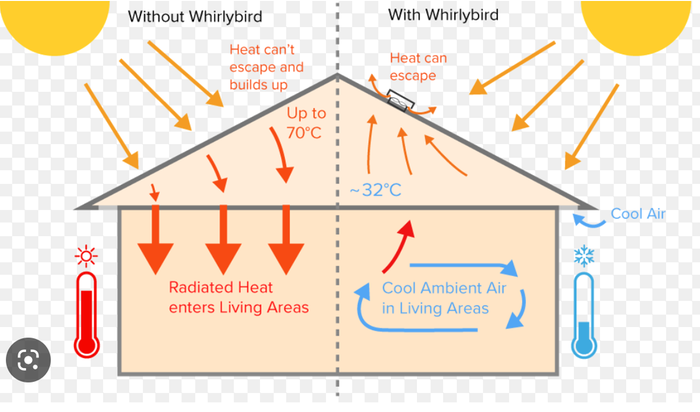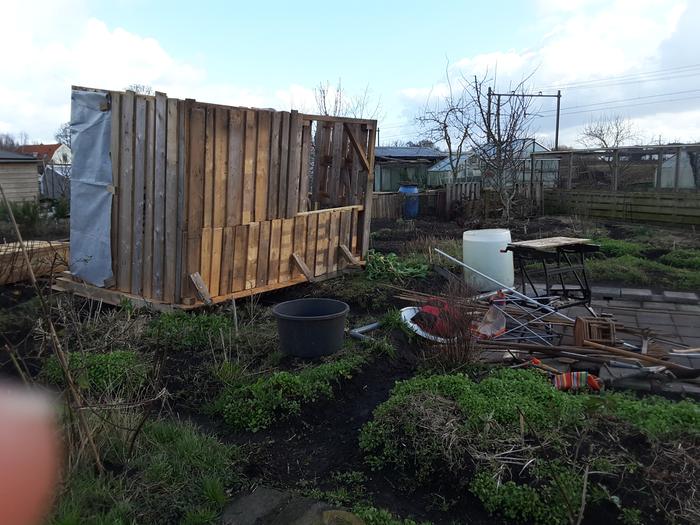
 16
16







Besides food production, two other major applications of windmill technology were the production of paper (using ropes and sails from ships as a raw material) and the sawing of wood. Windmills were also crushing chalk (to make cement), grinding mortar, draining mines, ventilating mineshafts (and even a prison), polishing glass and making gunpowder.

 7
7




 image from wikipedia
image from wikipedia
 Swedish barn image from wikipedia.
Swedish barn image from wikipedia.How Permies works: https://permies.com/wiki/34193/permies-works-links-threads
My projects on Skye: The tree field, Growing and landracing, perennial polycultures, "Don't dream it - be it! "
 9
9




In modern times the only right way forward is to come back to nature.
 11
11
















 3
3




B Davis wrote:A small wind turbine could be used to run an air compressor, compressed air could be stored in recycled propane tanks, like a battery, and used to power all sorts of neat things. I believe the process of air compression would also create some surplus warmth.
Anybody tried it? I’ve wanted to for a long time.
How Permies works: https://permies.com/wiki/34193/permies-works-links-threads
My projects on Skye: The tree field, Growing and landracing, perennial polycultures, "Don't dream it - be it! "
 4
4




There will come a day of self-sufficiency, freedom, and divine living. But for those men for whom wisdom is possible, and who do seek it, such men may truly live as gods. For men of wisdom, all things can be full of justice and mutual love. From the Wall of Oinoanda

 10
10




Hans Albert Quistorff, LMT projects on permies Hans Massage Qberry Farm magnet therapy gmail hquistorff
 5
5




In modern times the only right way forward is to come back to nature.
 2
2




Being weird is easy. Making it mainstream is hard. Be brave! https://www.youtube.com/@healthygreenbrave
 5
5




B Davis wrote:A small wind turbine could be used to run an air compressor, compressed air could be stored in recycled propane tanks, like a battery, and used to power all sorts of neat things. I believe the process of air compression would also create some surplus warmth.
Anybody tried it? I’ve wanted to for a long time.
"You must be the change you want to see in the world." "First they ignore you, then they laugh at you, then they fight you, then you win." --Mahatma Gandhi
"Preach the Gospel always, and if necessary, use words." --Francis of Assisi.
"Family farms work when the whole family works the farm." -- Adam Klaus












 5
5




Wind is one of my biggest problems. Laden with salt it damages my plants, evergreen leaves are shredded in winter and most trees grow at 30 degrees t6o vertical. This year I cleared a new part of my garden, hoping to grow more perennial vegetables and useful shrubs in lee of Sycamore trees. I decided on a whim to create mini berms, about 18 inches from ridge to base, parallel to the wind direction (prevailing winds generally from SW), to give a bit of shelter. This also gives more shady/damp and well drained/sunny areas (hopefully!), however this autumn I noticed that they collected the sycamore leaves really well.
How Permies works: https://permies.com/wiki/34193/permies-works-links-threads
My projects on Skye: The tree field, Growing and landracing, perennial polycultures, "Don't dream it - be it! "
 3
3




R Scott wrote:
B Davis wrote:A small wind turbine could be used to run an air compressor, compressed air could be stored in recycled propane tanks, like a battery, and used to power all sorts of neat things. I believe the process of air compression would also create some surplus warmth.
Anybody tried it? I’ve wanted to for a long time.
Many Amish do this. The communities that allow air power but not electricity. The ones that allow solar or air power, everyone does solar because it's way cheaper up front.
I have looked into it for my planned off grid shop, and I think my best answer is a high efficiency electric compressor running direct from solar while there is excess sun and large storage tank(s). I simply don't have wind, and the expensive part of off grid solar is by far the batteries. By building a water tower (cistern on the hill) and banking compressed air and possibly heat and cool, I can run a much more modest battery system that is both cheaper up front and much less maintenance over time.
Life on a farm is a school of patience; you can't hurry the crops or make an ox in two days.
Henri Alain
 8
8




 3
3




 6
6




 4
4




Life on a farm is a school of patience; you can't hurry the crops or make an ox in two days.
Henri Alain
 7
7




Trees.
Trees.
"It's obvious that the thickness of a tree is largely determined by the amount of movement it's given by the wind..."
"the tree eats the wind and turns it into wood. (Source) "

 3
3




 1
1








 2
2








 1
1








 4
4




 2
2




 1
1




 2
2




S Adams
 5
5






Whirlybirds (AKA ‘turbine vents’) are a type of semi-mechanical vent that can be installed onto the roofs of sheds and houses to help remove heat from the ceiling cavity.
They look like cylindrical domes with fins that spin in the wind. In passive, traditional whirlybirds, the fins create a vacuum, sucking up warm air to expel it from a roof cavity.
Explore the Permies Digital Market - ebooks, movies, building plans, courses, and more. Oh my!














 2
2




How Permies works: https://permies.com/wiki/34193/permies-works-links-threads
My projects on Skye: The tree field, Growing and landracing, perennial polycultures, "Don't dream it - be it! "
 3
3




 1
1




There is madness to my method.
"Life finds a way"- Ian Malcolm
"We're all mad here" - The Cheshire Cat
 7
7




 2
2




Andrea Hart wrote:My son set up a passive wind-powered mulberry harvester last summer.
The prevailing wind direction was from the higher end towards the lower end, causing the tarp to rock from side to side, rolling the berries downhill. We put a kiddie pool under the bottom end to catch them. Harvested gallons and gallons of berries from this!
"Also, just as you want men to do to you, do the same way to them" (Luke 6:31)






 2
2





"Also, just as you want men to do to you, do the same way to them" (Luke 6:31)
 2
2




Inge Leonora-den Ouden wrote:
Thank you for this idea! Friends have a mulberry tree, but most of the berries just fall down (making dark spots on the terrace tiles). I'll suggest them to make something like you show here. Then I can help them making mulberry jam.
 1
1





|
chirp chirp chirp tiny ad chirp chirp
Freaky Cheap Heat - 2 hour movie - HD streaming
https://permies.com/wiki/238453/Freaky-Cheap-Heat-hour-movie
|




